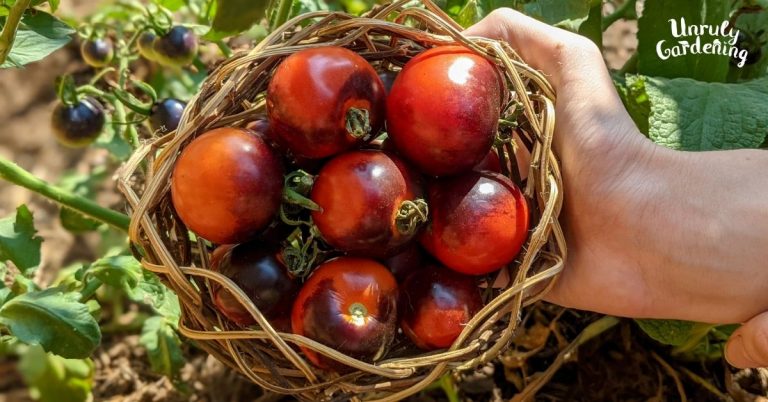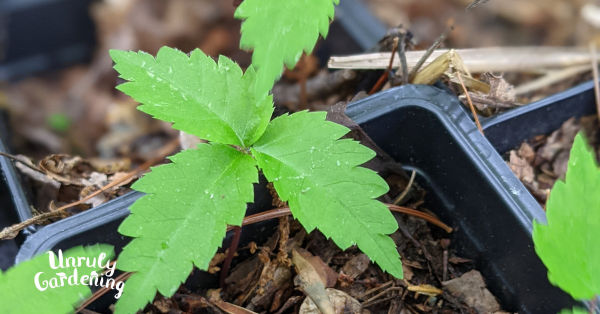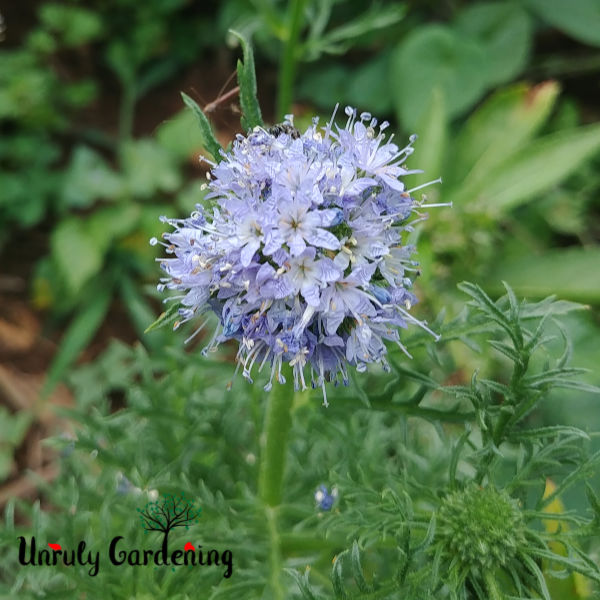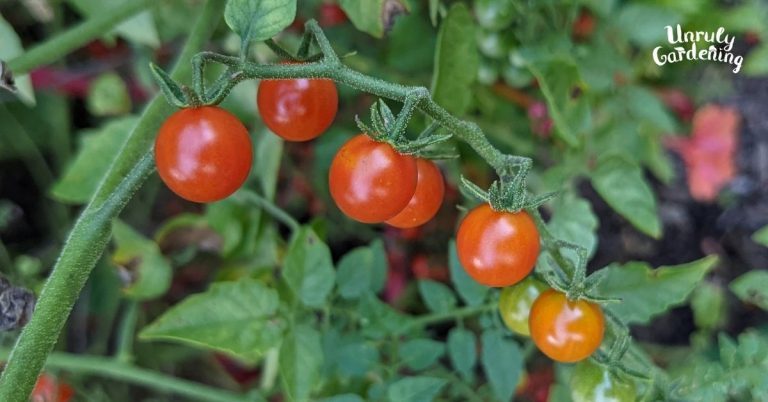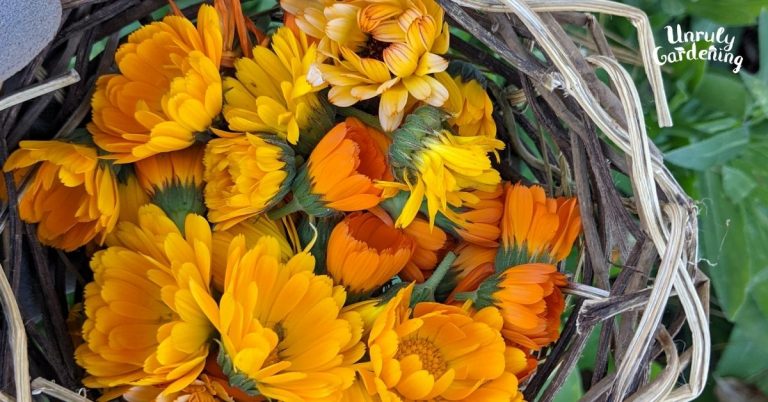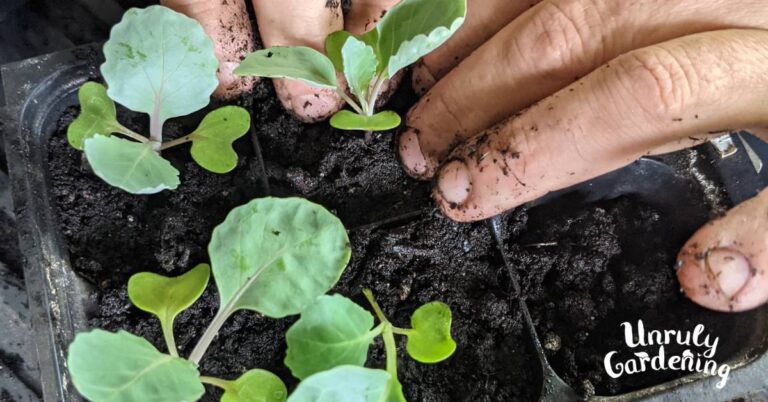Kilimanjaro White Marigolds – Plant Spotlight
Want a tall, bushy green plant loaded with tons of ruffled white flowers that the pollinators absolutely adore? Kilimanjaro white marigolds might be just what you’re looking for!
The 2″ creamy flowers have open centers, unlike many marigolds, where the petals are so strongly ruffled that the pollen of the flowers is simply inaccessible to many pollinators. Not these marigolds! Bumblebees, in particular, seemed quite fond of them.

Height & Support
The plants themselves are much taller than any other type of marigold we’ve ever planted: growing to about 2 feet tall, with some growing upward of 3 to 4 feet. Sometimes branches snap after storms, but these marigolds are able to keep themselves upright otherwise without need of assistance. A few gardeners report theirs needed support, but we haven’t encountered that yet.
Kilimanjaro Marigolds Smell Nice!
Interestingly enough, we found that this marigold appears to have a slightly different scent than the sorts that you tend to find sold as plants in garden centers, and, really, different from every other marigold we’ve grown.
We love the fragrance and consider it very enjoyable, but it’s also one that’s hard to describe! Marigolds usually have a strong off-putting scent, but Kilimanjaro White Marigolds have a pleasing smell, similar to carnations. Lovely!

Growth Habit
While other marigolds tend to form little mounds of greenery, this marigold has a different shape: the greenery doesn’t go out at the base so much as it goes up for a bit before starting to bush. It isn’t bare, but it’s not the dense, rounded mound you may be expecting, either.
This does mean the ground near the base of the plants will have a little room available- and you can actually tuck a few low-growing flowers quite close to the stems without ill effects on either plant.
We’ve found that pansies and violas, in particular, do very well when planted close in this way: the marigolds actually ended up shading them from the harsh sun and heat later in the season, so we ended up with a few pansies blooming in summer!
Growing Details for Kilimanjaro White Marigold
- Plant: Heirloom marigold (Tagetes erecta nana)
- Color: White/cream flowers, green foliage.
- Days to maturity: 60
- Frost-hardy: No
- Lifespan: Annual flower.
- When to plant: Start indoors 3-4 weeks before final frost date for transplants, or sow directly in garden once all risk of frost has passed.
- Requires support: Not usually, but sometimes
Where to Buy
We got our seeds from Baker Creek, other online nurseries carry them as well.
How to Grow
You can start Kilimanjaro White Marigold Seeds directly in the garden, or give them a head start by starting seeds inside, then transplanting outside.
Method 1: Start Seed Indoors + Transplant
Start the seeds indoors 3-4 weeks before your final frost date, sowing the seeds 1/4 an inch deep and keeping them warm, moist, and in the light. (Or, we’ve also surface sown indoor trays with good results too.)
Grow lights are preferable, if you can get your hands on them, and if you have them, make sure the container you used to sow them in is elevated to rest about an inch or two below the lights. If you choose not to use grow lights, then place them in your brightest, sunniest window instead.
Seeds should sprout in 3-10 days. Fresh seed packaged for use this year will germinate quicker than seed that’s a few years old. Once sprouted, continue to let the seedlings grow in the light. If you’re growing in a windowsill, make sure to rotate the plants every other or every few days so they don’t grow up crooked.
A note on watering
While normally, one would not want to let their indoor transplants dry out, these marigolds are an exception: once they’ve started growing, they actually do best if they’re allowed to dry out a bit between watering.
If you struggle to get your marigolds to thrive, try to let them dry out a bit more between watering. Don’t let them wither, though! There’s a sweet spot: you just have to find it. Luckily, marigolds aren’t that picky, and they’re very forgiving- yes, even these, with their little bit of snobbiness about their water requirements!
Avoid letting the plants grow rootbound. Transplant plants up to larger pots whenever you notice the roots becoming crowded. Marigolds can sometimes be hungry plants, especially when started indoors: if you see their leaves yellowing, dose them thoroughly with fish emulsion, or another liquid fertilizer.
Transplanting Seedlings
Plant the marigolds out in the garden only after all risk of frost has passed. Make sure to harden them off first!
Plant them in full sun, and give them a little treat by mixing a scoop of compost and granular organic fertilizer in the soil where you plan to plant them.
Space the plants about 12″ apart. This will seem very distant, but the plants will grow! You can go closer together, about 8″, but this will reduce airflow between the plants, which can sometimes cause problems in some climates: try both, and see what does best for you!
Once you’ve got them planted, water them well. It’s a good idea to also give them a generous dose of fish emulsion to help them get going, especially if you started them indoors earlier than 4 weeks before your estimated final frost date. Fish emulsion can also help your plants bounce back from transplant shock.

Method 2: Direct Sowing
To direct-sow, simply sow the marigold seeds into the soil 1/4 of an inch deep, spacing the seeds 8″-12″ inches apart in a location that gets full sun after all risk of frost has passed.
Keep the seeds moist until they germinate. Seeds may take longer to germinate outdoors than when started indoors, as it’s often cooler outside at the time of year you’d be planting. They should still germinate relatively quickly, but you probably shouldn’t expect them to germinate in 3 days – probably closer to a week or so.

Care for Kilimanjaro White Marigolds
Mulching around the base of the plant will help with water retention and keeping things cool, both things that can help plants survive hot, dry weather.
The only real care these marigolds require is continual dead-heading: leaving the spent blooms will result in plenty of seeds, but will cut short the blooming season.
If you can, try to dead-head your marigolds every 2-3 days. This will result in more flowers, and a longer blooming season, as long as you can keep up!
If you have a marigold that has mostly dead or spent blooms, and no buds, but isn’t dead yet, you might be able to rescue it by snapping off all the dead and spent blooms, and giving it a few days. This can often prompt the plant to send out fresh buds.

Saving Seeds
Kilimanjaro White Marigold is a heirloom marigold, so it will grow true from seed. Assuming you don’t have other kinds of marigolds around that they may end up cross-pollinating with, that is!
They do set tons of seeds- one plant easily producing enough seeds to fill multiple seed packets- so if you love these marigolds, you’re in luck! As long as you save some fresh seed every year, odds are you’ll never run out of these delightful, fragrant, lovely flowers.
To learn how to save marigold seeds, check out our article:

